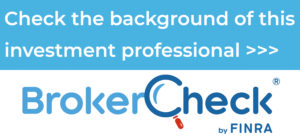Investing for Major Financial Goals
How do you set goals?
The first step in investing is defining your dreams for the future. If you are married or in a long-term relationship, spend some time together discussing your joint and individual goals. It’s best to be as specific as possible. For instance, you may know you want to retire, but when? If you want to send your child to college, does that mean an Ivy League school or the community college down the street?
You’ll end up with a list of goals. Some of these goals will be long term (you have more than 15 years to plan), some will be short term (5 years or less to plan), and some will be intermediate (between 5 and 15 years to plan). You can then decide how much money you’ll need to accumulate and which investments can best help you meet your goals. Remember that there can be no guarantee that any investment strategy will be successful and that all investing involves risk, including the possible loss of principal.
Looking forward to retirement
After a hard day at the office, do you ask, “Is it time to retire yet?” Retirement may seem a long way off, but it’s never too early to start planning — especially if you want your retirement to be a secure one. The sooner you start, the more ability you have to let time do some of the work of making your money grow.
Let’s say that your goal is to retire at age 65 with $500,000 in your retirement fund. At age 25 you decide to begin contributing $250 per month to your company’s 401(k) plan. If your investment earns 6 percent per year, compounded monthly, you would have more than $500,000 in your 401(k) account when you retire. (This is a hypothetical example, of course, and does not represent the results of any specific investment.)
But what would happen if you left things to chance instead? Let’s say you wait until you’re 35 to begin investing. Assuming you contributed the same amount to your 401(k) and the rate of return on your investment dollars was the same, you would end up with only about half the amount in the first example. Though it’s never too late to start working toward your goals, as you can see, early decisions can have enormous consequences later on.
Some other points to keep in mind as you’re planning your retirement saving and investing strategy:
- Plan for a long life. Average life expectancies in this country have been increasing for years and many people live even longer than those averages.
- Think about how much time you have until retirement, then invest accordingly. For instance, if retirement is a long way off and you can handle some risk, you might choose to put a larger percentage of your money in stock (equity) investments that, though more volatile, offer a higher potential for long-term return than do more conservative investments. Conversely, if you’re nearing retirement, a greater portion of your nest egg might be devoted to investments focused on income and preservation of your capital.
- Consider how inflation will affect your retirement savings. When determining how much you’ll need to save for retirement, don’t forget that the higher the cost of living, the lower your real rate of return on your investment dollars.
Facing the truth about college savings
Whether you’re saving for a child’s education or planning to return to school yourself, paying tuition costs definitely requires forethought — and the sooner the better. With college costs typically rising faster than the rate of inflation, getting an early start and understanding how to use tax advantages and investment strategy to make the most of your savings can make an enormous difference in reducing or eliminating any post-graduation debt burden. The more time you have before you need the money, the more you’re able to take advantage of compounding to build a substantial college fund. With a longer investment time frame and a tolerance for some risk, you might also be willing to put some of your money into investments that offer the potential for growth.
Consider these tips as well:
- Estimate how much it will cost to send your child to college and plan accordingly. Estimates of the average future cost of tuition at two-year and four-year public and private colleges and universities are widely available.
- Research financial aid packages that can help offset part of the cost of college. Although there’s no guarantee your child will receive financial aid, at least you’ll know what kind of help is available should you need it.
- Look into state-sponsored tuition plans that put your money into investments tailored to your financial needs and time frame. For instance, most of your dollars may be allocated to growth investments initially; later, as your child approaches college, more conservative investments can help conserve principal.
- Think about how you might resolve conflicts between goals. For instance, if you need to save for your child’s education and your own retirement at the same time, how will you do it?
Investing for something big
At some point, you’ll probably want to buy a home, a car, maybe even that yacht that you’ve always wanted. Although they’re hardly impulse items, large purchases often have a shorter time frame than other financial goals; one to five years is common.
Because you don’t have much time to invest, you’ll have to budget your investment dollars wisely. Rather than choosing growth investments, you may want to put your money into less volatile, highly liquid investments that have some potential for growth, but that offer you quick and easy access to your money should you need it.
Thanks for checking out the blog!
This material is for general information only and is not intended to provide specific advice or recommendations for any individual. There is no assurance that the views or strategies discussed are suitable for all investors or will yield positive outcomes. CDs are FDIC Insured to specific limits and offer a fixed rate of return if held to maturity, whereas investing in securities is subject to market risk including loss of principal. This material was prepared by LPL Financial.
The opinions voiced in this material are for general information only and are not intended to provide specific advice or recommendations for any individual. To determine which investment(s) may be appropriate for you, consult your financial advisor prior to investing. All performance referenced is historical and is no guarantee of future results. All indices are unmanaged and cannot be invested into directly.
The information provided is not intended to be a substitute for specific individualized tax planning or legal advice. We suggest that you consult with a qualified tax or legal advisor.
LPL Financial Representatives offer access to Trust Services through The Private Trust Company N.A., an affiliate of LPL Financial.
Gregory Armstrong and Joe Breslin are Registered Representatives with and Securities are offered through LPL Financial, member FINRA/SIPC Investment advice offered through ADE, LLC, a registered investment advisor. Armstrong Dixon and ADE, LLC are separate entities from LPL Financial.
This communication is strictly intended for individuals residing in the state(s) of CO, DE, DC, FL, MD, MO, NY, NC, OR, PA, VA and WV. No offers may be made or accepted from any resident outside the specific states referenced.
Securities and insurance offered through LPL or its affiliates are: 









